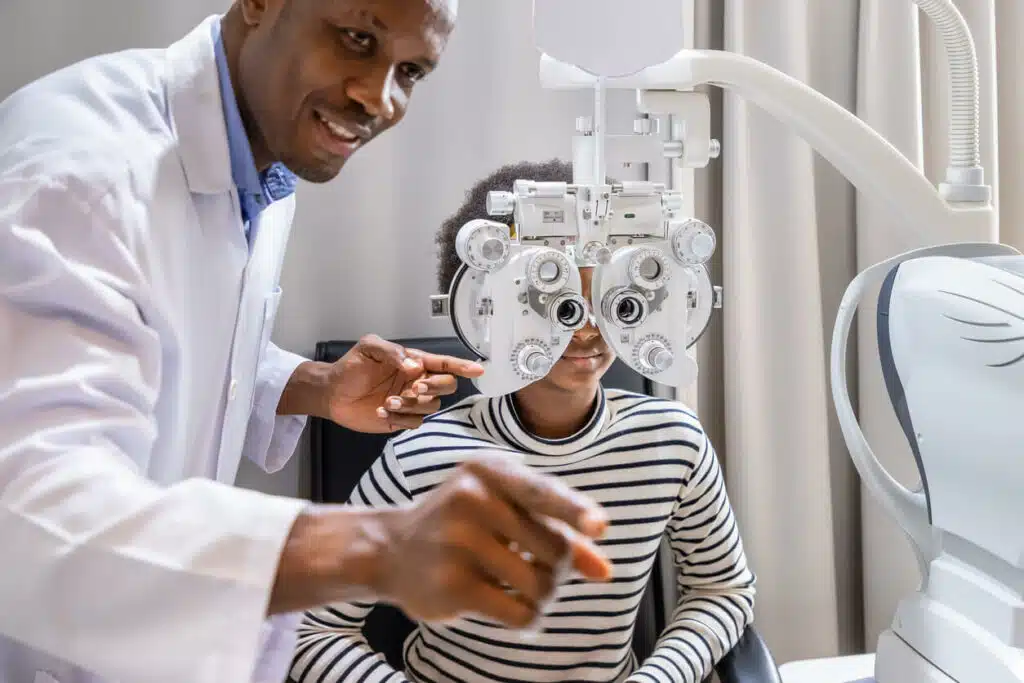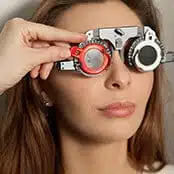
What aspect of your physical function could be more vital than your vision? Are you taking care of your eyes with routine medical examinations? Here, we have provided information on three of the most common eye conditions, including their symptoms, causes and treatments. With the right education, you can be proactive about eye health and keep your good vision for life.
Glaucoma
Characterized by increased intraocular pressure (in other words, inside the eyeball), glaucoma is the second leading cause of vision loss in the world primarily affecting people who are middle-aged and older. It can damage the optic nerve and therefore, gradually destroy eyesight. Sadly, the loss is permanent; so, getting an annual eye exam can detect glaucoma early and avoid serious vision consequences later on.
Causes, Symptoms and Treatment Options of Glaucoma
Glaucoma is a somewhat mysterious eye condition that can take multiple forms. However, the most common form is open angle glaucoma. This occurs when the drainage of fluid between the cornea and the iris slows and causes increased internal pressure in the eye. This kind of glaucoma is hereditary and relatively silent, having no symptoms whatsoever.
Open angle glaucoma can, however, be detected by your ophthalmologist with a few simple in-office tests. If they have determined that you have open angle glaucoma, they will provide you with treatment options. Daily eye drops to improve drainage and decrease intraocular pressure is the primary way to manage open angle glaucoma.
Another type, closed angle glaucoma, can be more serious because some structures in the eye are so narrow that drainage is suddenly occluded or blocked. Vision reduces rapidly and can require a trip to the nearest hospital ER for treatment.
Closed angle glaucoma is also hereditary, so those at risk are recommended to receive a laser surgery called an iridotomy. This in-office procedure creates a tiny drainage hole in the iris of the eye. The opening will then allow for fluid to drain quickly in the event of sudden build up.
Cataracts
Cataracts are a common occurrence for many older adults. Often beginning in middle age and advancing through the senior years, cataracts are proteins which collect within the lens of the eye. The thicker these proteins are, the cloudier the lens becomes. People with diabetes or who are exposed to excessive amounts of sunlight from childhood on may develop cataracts more quickly.
Symptoms And Treatments of Cataracts
The symptoms of cataracts usually develop relatively slowly over the course of years. They can be only mildly bothersome, but severe symptoms may impact distance vision and the ability to see well in dim light. As such, symptoms include:
- Sensitivity to bright light
- Seeing halos around streetlights at night
- Double vision
- Poor night vision
- Need for frequent changes in corrective lenses
Most people with cataracts function well for years without the need for any intervention. However, it is important to have an eye doctor follow their progress annually and to discuss cataract surgery if vision begins to be impacted.
Today’s cataract surgeries are extremely advanced, often taking just minutes to complete. Using a high-tech laser tool, your doctor can remove the clouded areas of the lens and install an artificial lens in its place. When cataracts are removed in this way, they do not come back. In other words, these state-of-the-art surgeries are “one and done” procedures with a very high success and patient satisfaction rate.
Macular Degeneration
Common with advancing age and certain hereditary factors, macular degeneration involves deterioration of the central portion of the highly vascular retina at the very back of the eye. Age-related macular degeneration, or AMD, leads to loss of central vision and can begin after the age of 50.
As with all chronic eye conditions, macular degeneration is progressive. So, early diagnosis and treatment is paramount to its management.
Most macular degeneration–about 80 percent of the cases–is called dry macular degeneration. It causes gradual loss of light-sensitive structures in the macula. Fortunately, some supplemental nutrients, such as lutein and vitamin C, can slow dry macular degeneration.
Another form of macular degeneration known as wet AMD, is more challenging to treat. Most people with wet AMD need eye injections of medications which slow the growth of extra blood vessels in the retina. Combined with laser treatments, wet AMD can be managed if it is caught quickly and regularly followed by a skilled ophthalmologist.
Ophthalmologist in Washington, MO
At Advanced Sight Center, our team of experienced ophthalmologists give patients thorough medical eye examinations to detect threats to vision, such as glaucoma, cataracts, macular degeneration, and others. If it is time for your annual check-up, call us today at (630) 239-1650 to arrange an appointment, or request a visit online. We will work with you to ensure you have the healthiest eyes and best vision possible.




